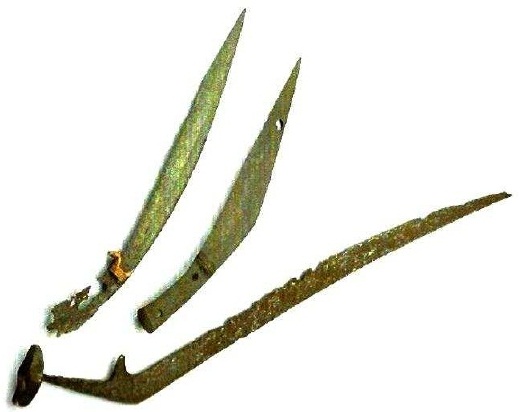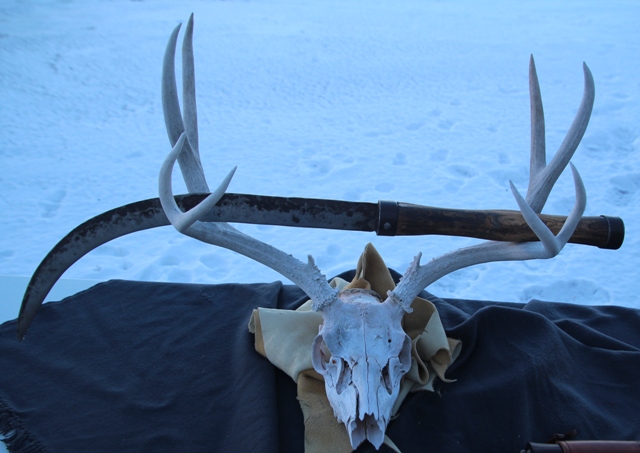Thickness, distal taper and overall dimensions of these things would also be of much help, but only if you have specific original examples to draw from.
I have seen loads of 'replicas' that frankly dont look anything like the originals, besides having a downwards sweeping blade...
If you in fact know of some proper replicas, please, share 😃
Getting back to that wiki article, it does mention a typology of sorts. I would like to read more about it if there is something more written somewhere on the internet...
Going by what Ive read so far, it seems like all of the pictures Ill be attaching to my post are of the third type. The most 'swordlike' examples.
I dont know how genuine some of the pieces are, but the pair from the Slovenian national museum should definitely be.
Any good quality pictures of those two are most highly appreciated, as well as all the other info one would need to replicate them, at least as 3D models to start with 😅
I did contact the museum, but Im not hopeful for an answer, we'll see how that goes...
Anyways, thanks for reading and thanks for your time and help, cheers!


